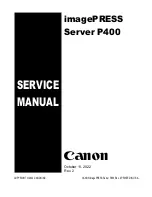
98
IGEL
Technology GmbH
IGEL Zero HDX
5.09.100
Instead of minimizing/maximizing sessions or switching between them using key combinations, you simply
click on the desired screen using the mouse. The screen is then shown as it was when you closed it (unless
you restarted the system beforehand).
•
Use pager:
Allow a number of virtual desktops.
•
Number of Screens - Horizontal:
Specify how many pages you want to display next to each other.
•
Number of Screens - Vertical:
Specify how many pages you want to display above each other.
•
Names of the workspaces:
Give names for the individual desktops.
•
Paging Resistance:
Specify how many pixels the cursor needs to be moved over the edge of the screen
before it triggers a switch of desktop. You only need to make this setting if you enable at least one of
the following options:
-
Wrap Workspaces when dragging a window:
The desktop is switched as soon as a window is
dragged out of view.
-
Wrap Workspaces with pointer:
The desktop is switched as soon as the mouse reaches the edge of
the screen.
7.2.6.
Start menu
Menu path:
Setup > User Interface > Desktop > Start Menu
In this area, you can configure the desktop start menu:
Figure 35: Desktop Start menu
There are three start menu types:
Legacy:
Standard setting which is similar to that from Windows
95 - a list of available sessions and options
Advanced:
An expanded start menu featuring a search function and
a more attractive design It requires more resources,
which is particularly noticeable on slow devices.
Auto:
Automatically select the classic or advanced start menu
depending on the processor.
















































